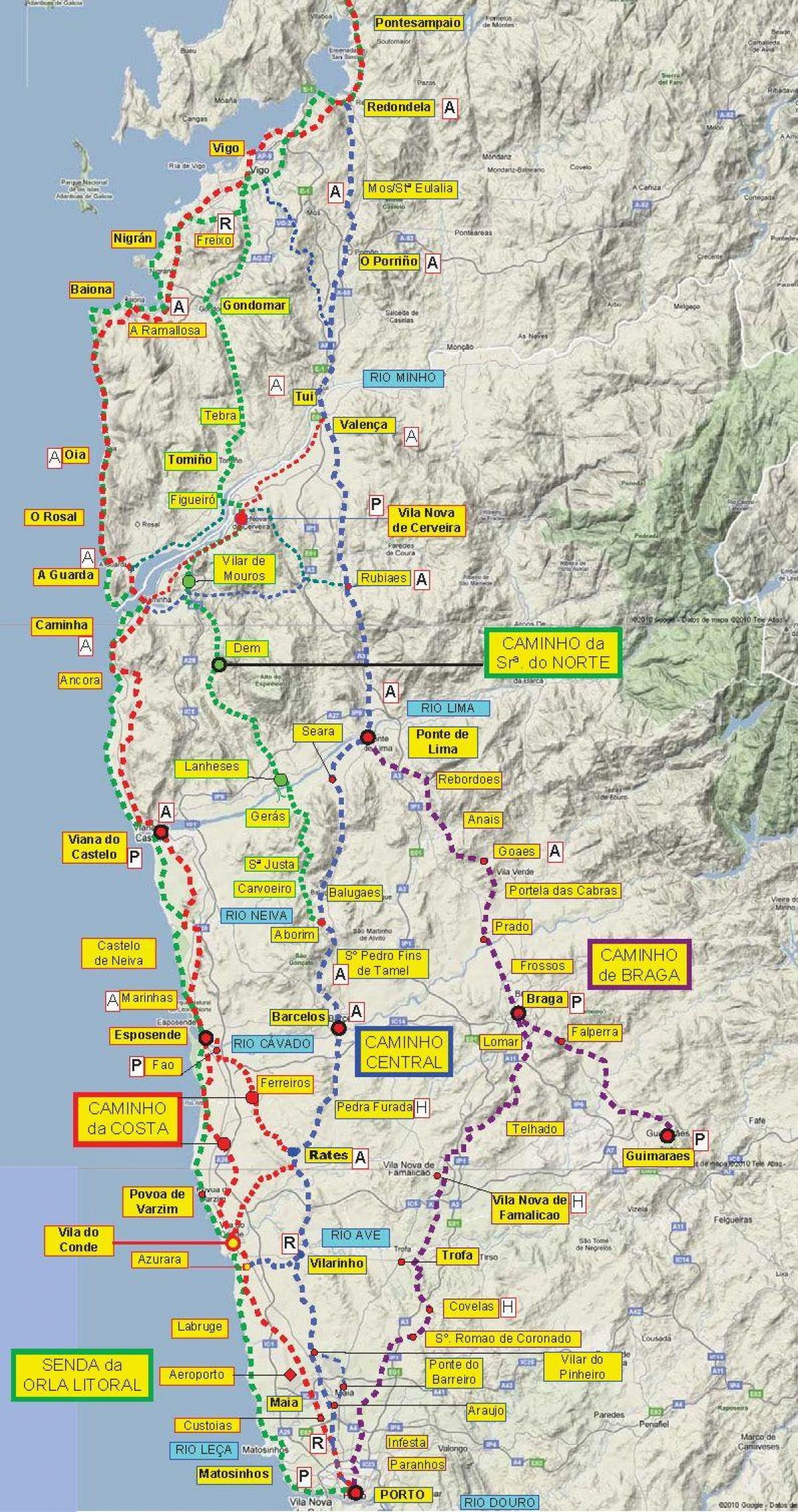search
Camino Portuguese map
Camino Portugues map. Camino Portuguese map (Southern Europe - Europe) to print. Camino Portuguese map (Southern Europe - Europe) to download. CP — Comboios de Portugal, EPE (CP; English: Trains of Portugal) is a state-owned company which operates freight and passenger trains in Portugal. Before June 2009, CP stood for Caminhos de Ferro Portugueses (English: Portuguese Railways) although the company has been using its current designation as a brand name since 2004 as its shown in camino Portuguese map. CP is split into six divisions: CP Alta Velocidade, the high-speed services (for the moment there is no high speed service in Portugal). CP Longo Curso, long distance mainline services ( Alfa Pendular and Intercidades ). CP Regional, regional services ( Interregional and Regional ). CP Lisboa, Lisbon suburban network. CP Porto, Porto suburban network. CP Carga, freight.
The Way to Santiago as its mentioned in camino Portuguese map is a millennial route that has been followed by millions of Pilgrims from the beginning of the 9th century, when the tomb of the Apostle James (Santiago) was discovered. Since then, people from all over the world have walked the ways that lead to the Cathedral where relics of the Holy Apostle are venerated; giving rise to a phenomenon that survives and gets stronger day by day. The Way is also an opportunity to discover the hospitality of the people of Northern Portugal and Galicia. The huge architectonical heritage, its centuries-old cultural traditions and the region’s rich gastronomy are of great historical value.
The Portuguese Way to St. James (Central Way) as you can see in camino Portuguese map is the most important Portuguese route and was chosen by millions of Pilgrims going to Santiago since the 9th century. The Portuguese Coastal Way to Saint James is important as it brings pilgrims from the most westerly part of Portugal, starting from Porto, it follows the coastline north in direction to Compostela. The Way to Santiago is a millennial route followed by millions of Pilgrims from the beginning of the 9th century, when the tomb of St. James (Santiago) was discovered in Galicia. The most frequently used Portuguese Way of St. James is the Central Route, which passes through Lisbon, Coimbra and Porto. It is fully waymarked from Lisbon with the unmistakable yellow arrows that mark the Ways of St. James, and sometimes with a yellow scallop shell on a blue background, the official symbol.


